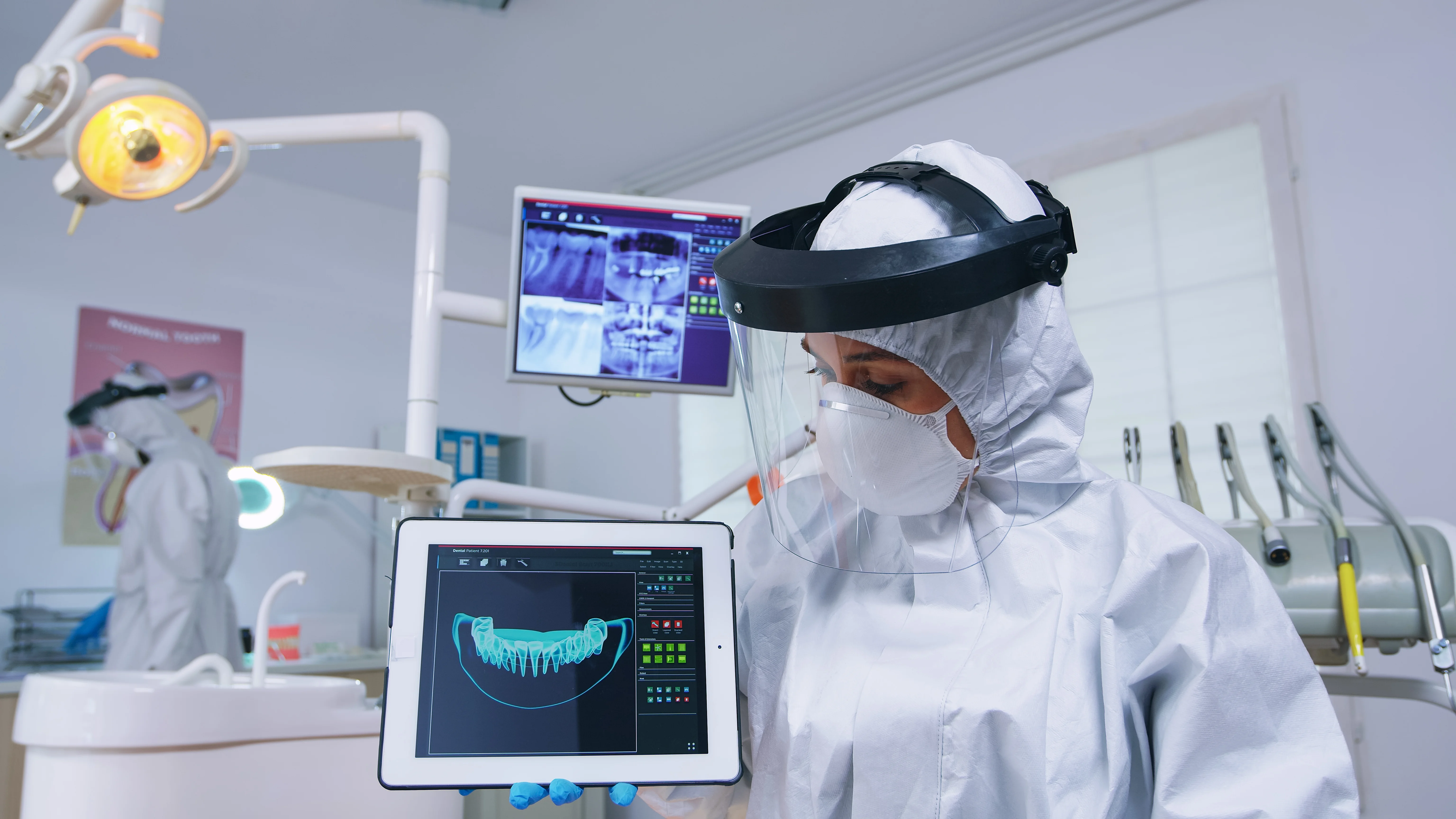In today's world, patients not only desire aesthetically pleasing teeth but also wish to have them done as quickly and comfortably as possible. At this stage, technology comes to the aid of both the dentists and the patients.
With the changing and evolving world of 2025, the healthcare sector is also keeping up with this rapid development. The advancing technological systems are making many procedures in healthcare easier, and they have made possible what once seemed like dreams. Let's take a closer look at these developments.
In a routine clinical workflow, patients' complaints are first listened to, an examination is conducted, and diagnoses are made with the help of X-ray images. With the current diagnostic protocols, panoramic X-rays and computerized tomography (CT) allow nearly all diseases to be diagnosed, and treatments can be planned accordingly. However, these procedures require extensive clinical experience and an intensive examination session.
At this point, artificial intelligence systems, which are rapidly developing and found in almost every aspect of our daily life, come to the assistance of the dentists. With AI-based programs, problems of the patients can be diagnosed much more easily with the help of a single X-ray, saving time and eliminating the need for expert-level diagnostics.
One of the major problems patients face is not knowing what result they will encounter after treatment. This is where smile design programs come in. Before starting treatment, by taking a few photos from the patients, we can accurately show them the post-treatment results. Smile designs can be tailored specifically to each patient’s profile and preferences.
After the examination in clinical practice, the next step is the treatment. At this stage, technology becomes the indispensable ally of dentists, saving time and providing comfort for patients. For example, in implant surgeries, thanks to the guidance surgeries that have recently been introduced, operation times have decreased, and implants can now be placed precisely in the desired areas.
During the impression-taking process, which is often uncomfortable for patients, developing camera systems provide incredible comfort with intraoral scanners. With a small camera, a 3D image of the teeth and mouth is created, and all subsequent procedures are carried out using these visual images. In cases where traditional impressions are not possible due to patients' gag reflexes, these systems provide significant convenience for both patients and dentists.
Moreover, with CAD/CAM (Computer-Aided Design and Computer-Aided Manufacturing) technologies, the time from tooth preparation to restoration delivery has now decreased to a very short time, even as little as one day. Patients' teeth are completely designed on a computer, and with the help of 3D printers and milling machines, aesthetic and durable restorations can be produced in a short time without compromising patient comfort.
All these technologies greatly assist dentists while providing patients with a more comfortable clinical experience. Intraoral scanners, smile design, and CAD-CAM systems have become routine in our clinic, and guided implant surgeries are utilized when needed.
Dr. Lecturer Şevki GÜLER
Periodontics


